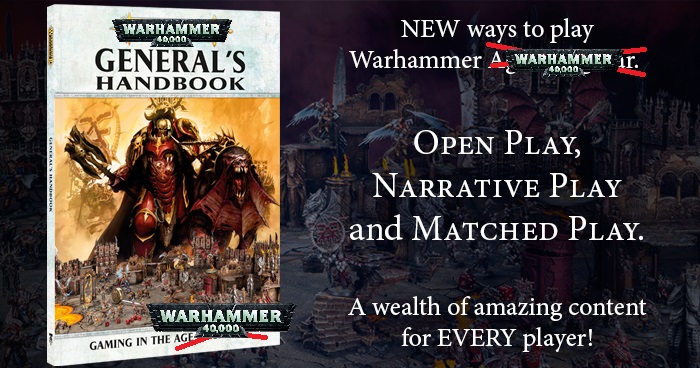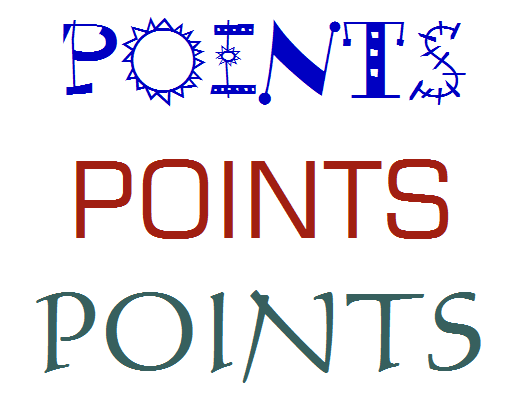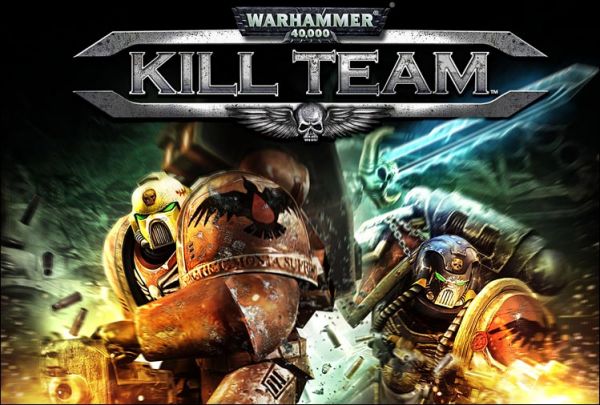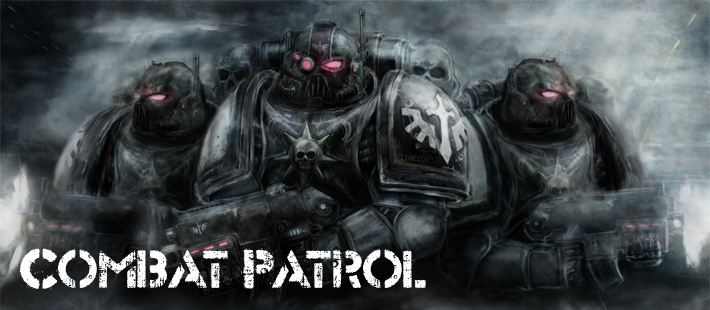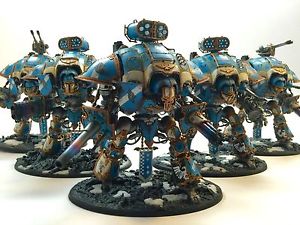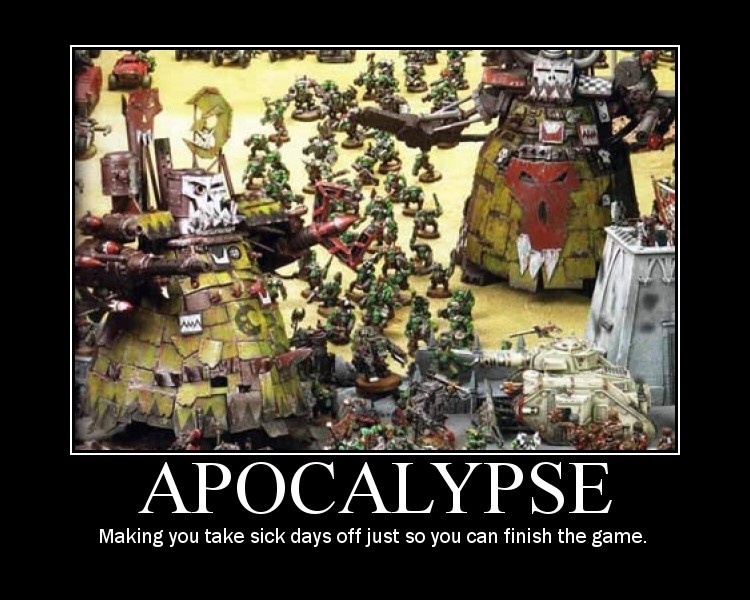40K: 8th Edition – 4 Ways to Play


Yep, 8th Edition should have “three” ways to play just like Age of Sigmar, but different…points and Apoc are a thing in 40K!
The reason that the 8th Edition version of “3 Ways” will have to be different is the most obvious; there will HAVE to be points in any “version” of the game. Sigmar had the advantage of flying out the gate with no points as a baseline. This will obviously be unacceptable to almost any 40K player. The other reason that I would never expect there to be a no points/open play option for 40K is that GW has already experienced the negative feedback this engendered during the AoS rollout. I doubt that the folks in Nottingham will want to go through that again.
In discussing the actual four play styles of 40K that I hope to see in the 8th edition rulebook, I am not going to differentiate between casual, narrative or tournament play. These already exist at almost every level of 40K play that I am going to talk about with the exception of Apoc. I am also going to avoid talking about these three play styles as I would hope GW realizes that 40K is a much more mature gaming system; we don’t need them to tell us in a rulebook what narrative gaming is…as they did in the AoS General’s Handbook. So assuming that we will have points in any playstyle of 40K, what might we expect?
The Starter/Skirmish Option
We are talking Kill Team and Battle for Vendros here. 500 points (or less) in terms of game size. Certainly unit restrictions. Both Kill Team and Vendros also have unique rule sets both in terms of game play and execution. My overall impression is that Kill Team has become a bit more popular in the last few years. For example, the Kill Team events at Adepticom 2017 filled up very quickly. I have also seen more Kill Team activity at our local GW store than in the past. Perhaps folks who want a break from a 2-4 hour game of 40K are testing the waters. Of course, Kill Team still uses the basic 40 rule set, with Kill Team specific mechanics. Perhaps more importantly, like Vendros, it is a great way to get newcomers into the game. Low model count, short game duration, not much painting. Low cost of entry. Best of all is the chance to let new folks give converting/customizing a try.
What about Vendros? It seems like another great way to give the next generation a chance to try 40K on for size. A modified/simplified rule set. Low model count. All necessary hobby supplies included. Basic painting is encouraged, but not required given the colored plastic used; similar to Blood Bowl. If I still had kids in the house in middle or high school, this would definitely be an inexpensive way to get them involved. Also, given the relatively short attention span of this generation, and all of the competition from electronics of every ilk, I would think it stands a shot of getting some young folks interested and engaged.
Bridging The Gap Option (better known as Combat Patrol)
So now we move up to a larger point threshold and the commensurate higher cost and model count. Here is the thing though. If GDub does this right, the move from Kill Team to Combat Patrol will be seamless. Get those newcomers engaged and taking part in the hobby as well as the game, they will naturally be interested in diversifying their collections. Wouldn’t it be great to add a couple of Independent Characters? How about a couple of vehicles with great special rules? How about a Monstrous Creature or two? Now throw in some Dedicated Transports or more Elites. Now we’re talkin!
Of course, this expanded interest means our young/newish (a word?) player is well on their way to joining us vets as part of the plastic crack gentry. Points? Don’t know. There are always guidelines, but in the “play it your way” mode of thinking, perhaps 750-1500 might be about right. In my way of thinking, as long as the model count and points are increasing, as well as the level of modeling/painting quality, it is mission accomplished.
As a narrative player, I often find myself playing as this level anyway. Write up some scenario and some backstory to go with it. Most of the time this ends up in the 1000-1500 point range. This point range is also a common starting point for escalation games; although many of these start at 500, they quickly rise to 1200-1500 or more. More often than not, this is also a point range which lends itself to a relatively short game; around 2 hours. Yes, that is a “short” game of 40K.
Mainstream Option
Here we are at last. This is where the majority of 40K gameplay takes place. Those 3-4 hour games with 1850, 2000, maybe as much as 2500 points. This is where most tournaments roll in. The complexity of the game is optimized at this level of play. Missions are well defined and available from an almost endless number of sources. Maelstrom happens here; I rarely see it at the Combat Patrol level. This should also be where those who started out in the hobby at a younger age will take a few years to get to.
Why a few years? For most younger folks, it is an issue of both time and money. Competition for time and availability of money. Those who enter the hobby at this level who are a bit older, say college age, don’t need to take the time to acclimate. Most 20 somethings have a few more resources, and less competition for their time. Most of the folks I play with in my local meta were here several years ago; it is when they put together their first large armies. We are talking dozens, perhaps hundreds of models. It is when they did some of their best conversions. These same folks now have steady jobs, families or multiple interests (other gaming systems, board games, e.g.) that compete with their 40K time.
Another hallmark of this gaming option is that the frequency of play tends to drop off dramatically as time goes on. Again, the desire is there, however, there is just too much other stuff going on. I am fortunate to get a game in once a month. Some folks I know only play 3-4 times a year at conventions or larger local events. In many ways, this is the level of play that is most diverse. By this, I mean in terms of play frequency, size of armies, quality of modeling and, in many ways, the resources spent on new models/armies. Some folks throw down for an entire 2000 point force every time a new codex is released. Many are more selective (I am one of these), due to resource (time and money) limitations and even storage space!
I love hearing a certain podcaster who says that he already has a new army built and ready to play just a few weeks after a new dex release. Who has the time for such a thing? Monetary resources perhaps, but building and painting an entire Genestealer Cult army just a few weeks after release? Talk about dedicated…or maybe just another day in the life of a fellow plastic crack addict.
Apoc (the Apex) Option
This is something I am sure exists in Age of Sigmar, but I have not really seen or heard of a whole lot of 5000 point games. I am VERY familiar with such things here in Milwaukee. My local gaming group, D-Company, runs an annual Apoc game known, appropriately, as The Big Game. The price of entry is 5000 points of painted models, and some folks bring as much as 10,000! Typically there are between 100,000 and 150,000 points of models from every known 30K/40K faction on the gaming tables on Saturday. With about 25 participants, that works out to an average of 6000 points per player! Moreover, there are usually 40-50 Super Heavies on tables as well. Big Game indeed! At this level of gaming, it is about playing with all the craziness that you can drag to the venue. These games, once the models are placed (which takes freakin hours in itself), can go on for 6-7 hours! No limits, no mercy! This is what 40K Apoc is about.
To me, this is the pinnacle of miniature wargaming. You have invested untold monetary and time resources to show off your best work. You are throwing 60 dice at a time. Putting down 10″ templates like you are putting down beer! 36″ blast radius as those Warhound’s reactors self-destruct! Madness, I say, pure madness!
So there you have it. The 4 Ways to play 40K. Of course each of these already exist, I am just hoping that GDub will put it all in one place, so we can see more clearly how it can work as a natural progression in the hobby. In an ideal situation, this should be the progression that gets folks engaged in the hobby at an early age, and keeps adding interest and commitment as time goes on. In the end, it is the responsibility not of GW, but of the community, both local and on a larger level, to keep folks engaged as they pass through these stages in their gaming “careers.” People don’t play this game alone. It is our responsibility to see that they never feel like they have to.
How do you play most of your 40K?

